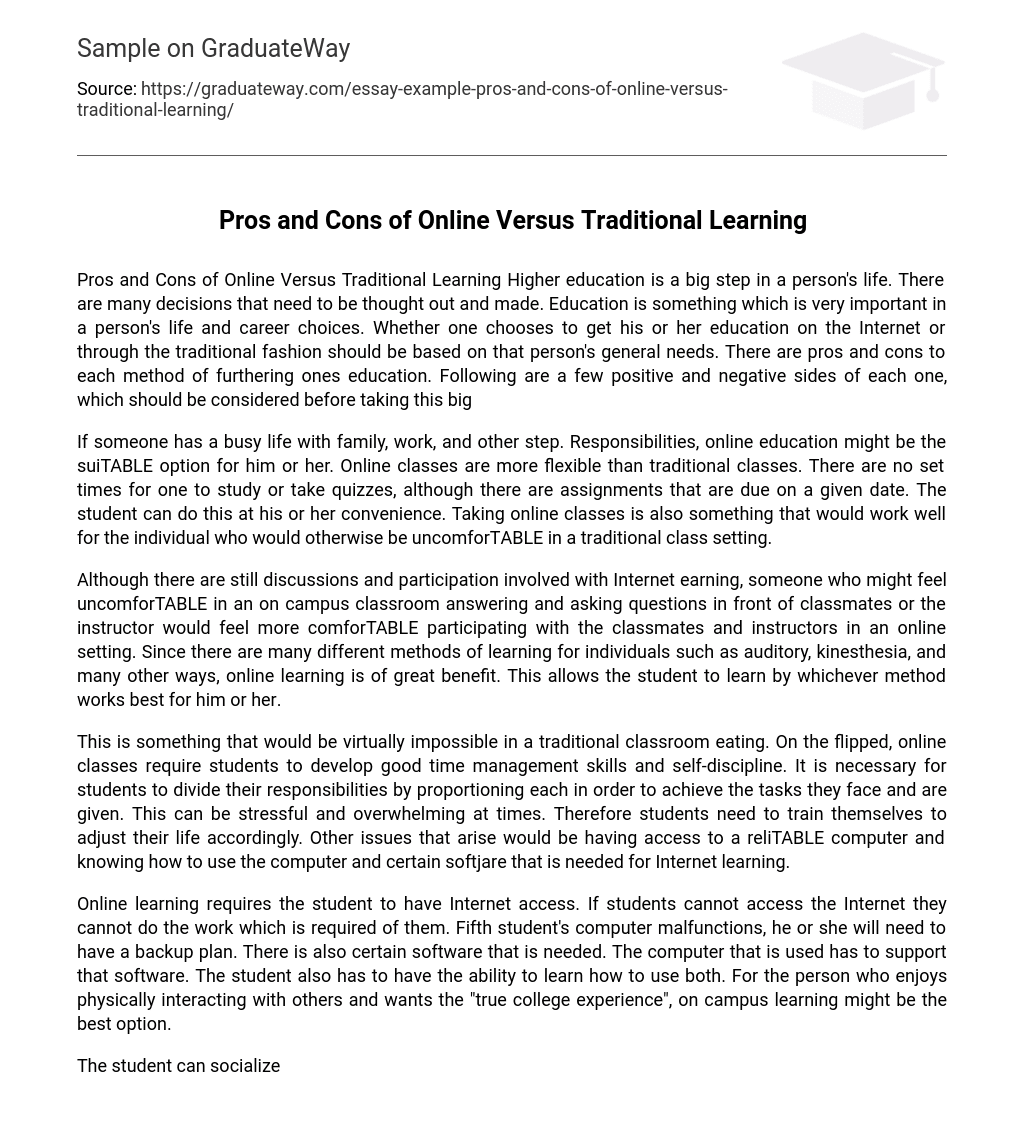When deciding on higher education, the choice between online and traditional learning is crucial. Each method has its own advantages and disadvantages, so it’s important to consider personal needs before making a decision. Evaluating the benefits and drawbacks of both approaches is essential in this important decision-making process.
If someone has a busy life with family, work, and other responsibilities, they may prefer online education. Online classes provide more flexibility compared to traditional classes. There are no set study or quiz times, but there are assignments with deadlines that can be completed at the student’s convenience. Online classes are also suitable for individuals who may feel uncomfortable in a traditional classroom setting.
Despite ongoing debates and involvement regarding earning money on the Internet, individuals who may find it uncomfortable to answer and ask questions in front of peers and teachers in a physical classroom would feel more at ease participating in an online environment. Online learning is highly advantageous due to the variety of learning methods available, including auditory and kinesthetic approaches, among others. This enables students to learn using the method that suits them best.
In a traditional classroom setting, it would be nearly impossible to accomplish what online classes allow. However, online classes necessitate the development of time management skills and self-discipline. Students must allocate their responsibilities appropriately in order to complete the tasks they are given. This can cause stress and feeling overwhelmed at times. Consequently, students need to learn how to adjust their lives accordingly. Additional challenges include having a reliable computer and proficiency in certain software necessary for internet-based learning.
Having internet access is essential for students who participate in online learning because it allows them to finish their coursework. It is important to have a backup plan in case a student’s computer malfunctions, so that their education can proceed without interruption. Furthermore, the computer being used must be able to run the required course software, and the student should possess the ability to effectively learn how to use both. Conversely, those who value interactive and immersive college experiences may choose on-campus learning.
In a traditional classroom environment, students can personally engage with their peers, fostering lifelong friendships and relationships. This setting also enables participation in extracurricular activities that are unavailable in online learning. Nevertheless, unforeseen circumstances such as work or family commitments, or transportation issues may necessitate attending classes on specific days and times.
Online education provides a distinct level of flexibility in contrast to traditional learning and acknowledges that every student has their own individualized approach to learning. This can impede their progress in a conventional classroom setting. Verbal instruction, typically employed by teachers, may not effectively accommodate students who learn visually or kinesthetically. Consequently, these learners may face difficulties in fully understanding the content and reaching their maximum capabilities.
Regardless of the option a student chooses, they will still need to find a way to cover essential living expenses like transportation, meals, and personal costs. This can be quite challenging for some students. While both online and traditional learning offer students the necessary education for their desired path in life and career, individuals must take into account their own circumstances. Those who are considering studying on campus should assess if they have sufficient time available for the learning experience.
When deciding between on-campus learning and distance learning, individuals need to consider multiple factors. For on-campus learning, they should assess their ability to arrange childcare and obtain necessary resources. On the other hand, for distance learning, it is important to evaluate time management skills and ensure access to the internet—both essential for online classes. Additionally, students should also consider their work schedule, child-caring responsibilities, and overall daily routine in order to determine which instructional method suits them better.
Regardless of the option a student chooses, it is crucial to find a means to cover essential living expenses such as transportation, meals, and personal costs. This can prove to be quite difficult for numerous students. Nonetheless, education is a lifelong investment with immense potential for positive outcomes if you apply your acquired knowledge in real-world scenarios. The extent of effort and dedication you devote to your education will ultimately have a substantial influence on your future. Therefore, setting practical goals instead of nearly unattainable ones is imperative.
Although college may feel overwhelming and stressful, there are resources to help you overcome these challenges. It’s important to be brave and ask for help when needed. By seeking clarification for your questions, you can determine the best educational approach for yourself, whether that involves distance learning or traditional learning. Both options offer promising opportunities for the future.





